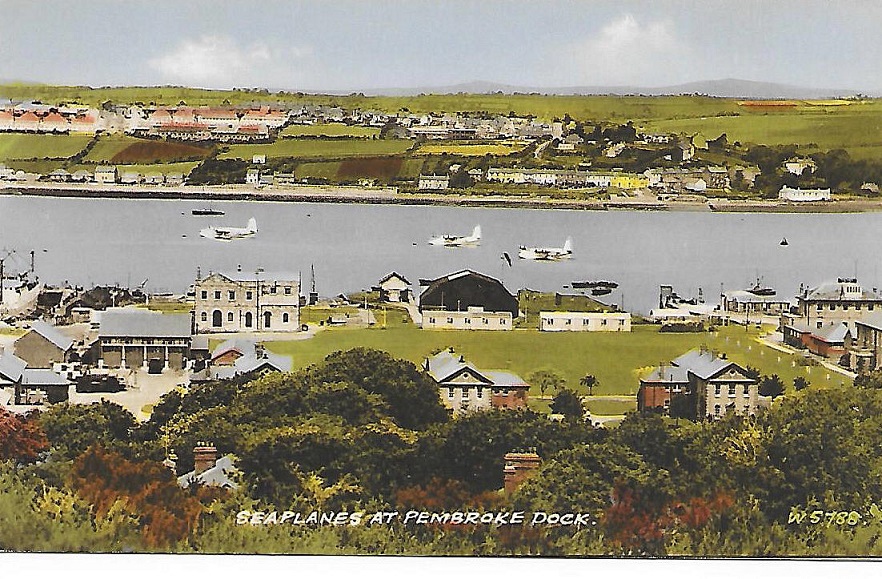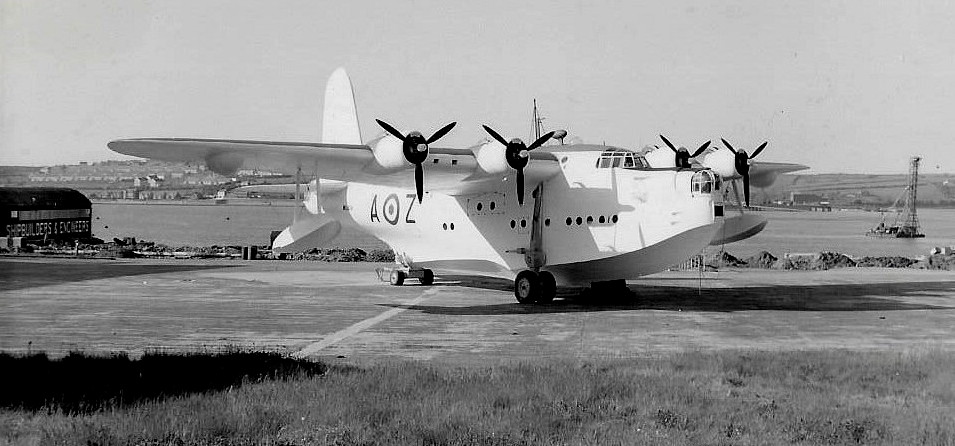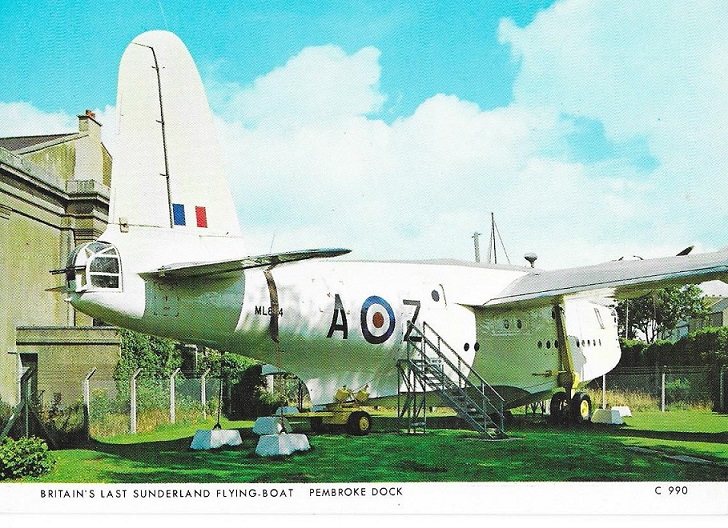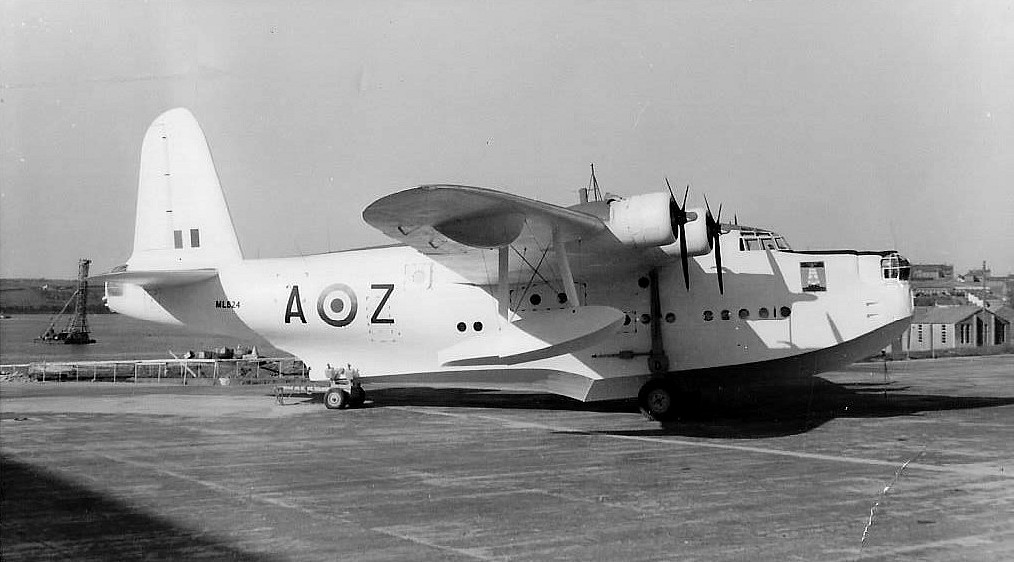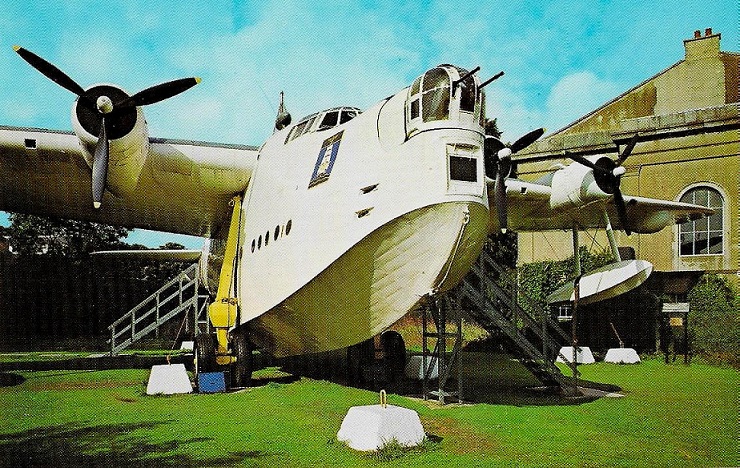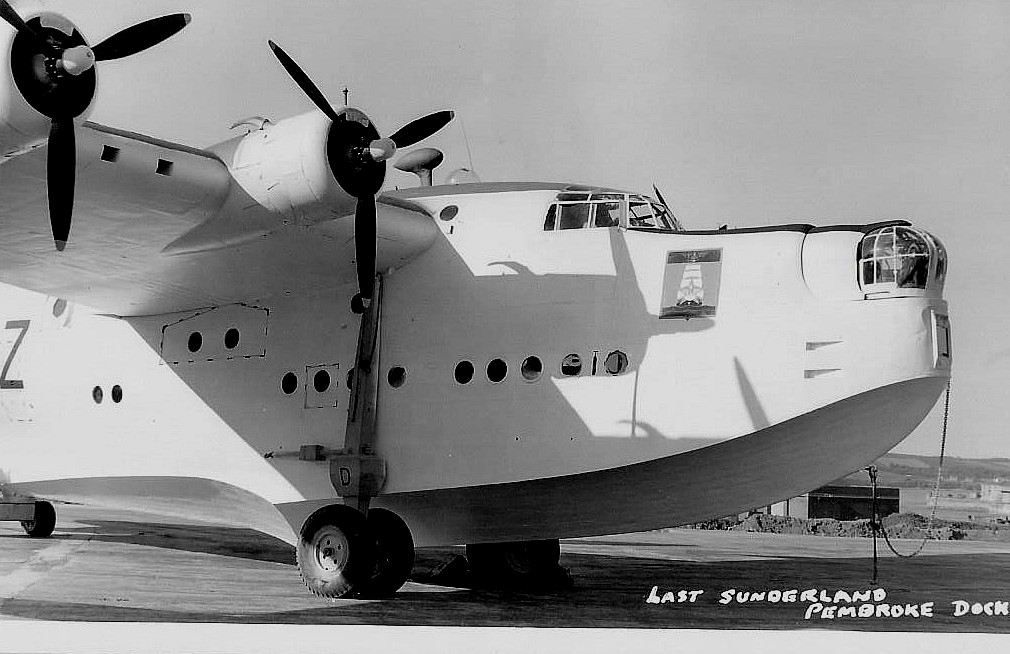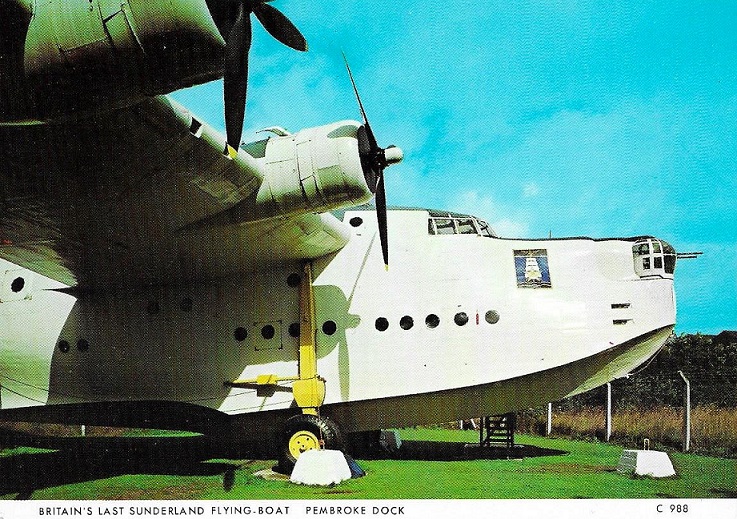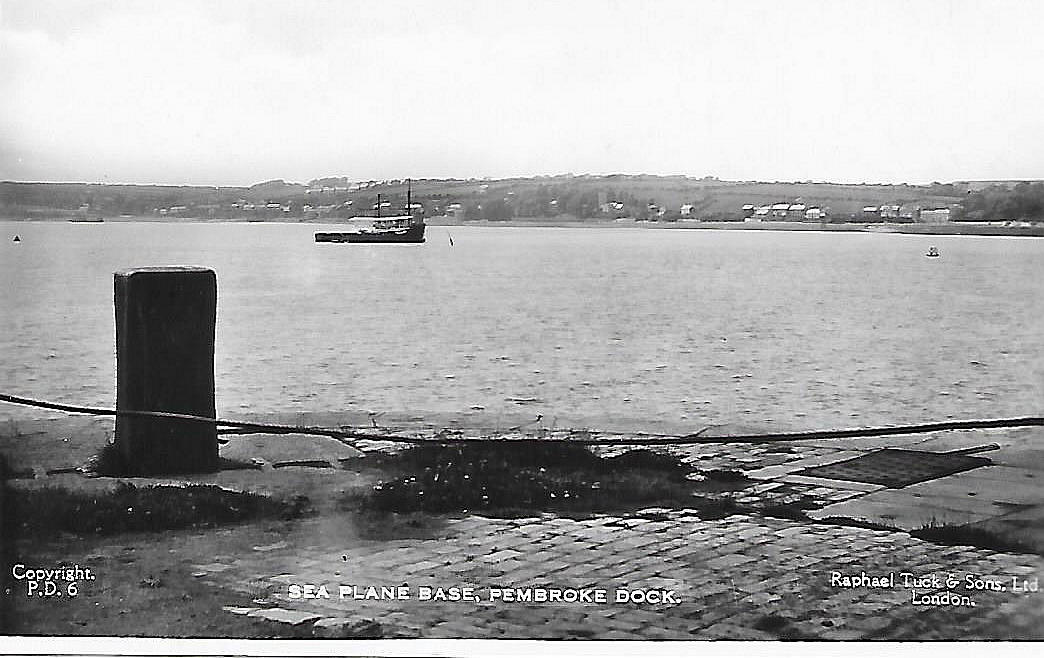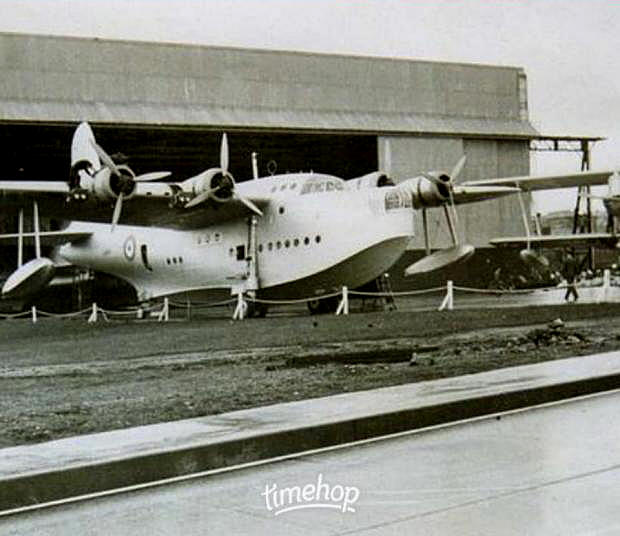Pembroke flying sites
Note: This map only gives the general location of Pembroke Dock within the UK.
PEMBROKE see CAREW CHERITON
PEMBROKE: RNAS airship base later aerodrome added
Military users: RNAS/RAF (Royal Naval Air Service / Royal Air Force)
Class C Airship Station for non-rigid airships (1916 to 1919)
RAF: Marine Operations Station 1918 to 1919
Location: 6nm W of Tenby, later to become CAREW CHERITON in WW2
Period of operation: 1916 to 1919
Site area: 272 acres 1554 x 1006
PEMBROKE DOCK: Military Flying Boat Station
Military users: From 1930: RAF
210 & 228 Sqdns (Supermarine Southamptons, Short Rangoons, Short Singapores, Supermarine Stranrears)
228 Sqdn operated just one Supermarine Scapa, (it appears), then Short Sunderlands
WW2: RAF Coastal Command
10 & 461 [Royal Australian Air Force] Sqdns (Short Sunderlands)
201, 228 & 230 Sqdns (Short Sunderlands)
209 Sqdn (Saro Lerwicks, later Consolidated PBY-5 Catalinas)
210 Sqdn (Short Sunderlands, later Consilidated Catalinas)
308 Ferry Training Unit (Short Sunderlands)
422 (Royal Canadian Air Force) Sqdn (Short Sunderlands?)
US Navy Patrol Squadron VP-63 (PBY-5s, the RAF named the type Catalinas) 1943
Special note: For a brief period Dutch crews escaping from Europe formed 320 Squadron flying their twin-engined Fokker T-VIII-W floatplanes here flying in RAF colours. The shortage of spares especially rendered the operation short-lived. They then became land based flying Avro Ansons from CAREW CHERITON
Location: In Milford Haven adjacent to Pembroke town centre
Period of operation: 1930 to 1957
Alighting area: WW2: Any direction by day between Neyland and Stack Rock. Night landings required more complex procedures. A large mooring area was defined N of the RAF Station/dockyard and WNW of Hobbs Point
NOTES: Despite the general area of Milford Haven being used in WW1, there are records including photographs of Royal Navy seaplanes using PEMBROKE DOCK after WW1 and before it opened as a Flying Boat Station in 1930. Hardly surprising of course as it was quite a major Naval Dockyard at that time and many of the bigger naval ships had aircraft on board mostly if not all seaplanes launched by catapult.
As so often happens the deeper you dig other somewhat interesting details emerge. When the short reign of the original Commanding Officer, Wing Commander Bob Leckie ended in late 1932 he was replaced by Wing Commander Arthur T Harris who in WW2 become globally famous as “Bomber” Harris, the leader of Bomber Command in WW2.
Just a thought, could it have been this interlude in his career with Coastal Command that led Harris to become a leading supporter in establishing a far more effective Air-Sea Rescue Service during WW2?
A FORTUNATE DISCOVERY
I would, without too much doubt, have struggled to find out anything about PEMBROKE DOCK, known throughout the RAF as “PD” if it wasn’t for a friend discovering a captioned book of photographs by John Evans who is a highly regarded local historian and originator of the idea to hold Flying Boat Reunions in Pembroke.
I took it upon myself to contact John Evans and he was delighted to hear about this project and offered every assistance, helping me in many ways with the local aviation history. I know I’ve said it time and again elsewhere but if it wasn’t for so many enthusiasts like John Evans from all over the country doing all the essential research and “legwork” involved, this 'Guide' would be a dull read at best and very incomplete.
FOR EXAMPLE
I learnt from John Evans that typically it took many years to effect the conversion of PEMBROKE DOCK from a naval dockyard into a major Flying Boat base. The work of building the first of the two big hangars was undertaken in 1934. Even in 1933 work on the slipway was still “in progress”.
As an interim measure to enable major work to be undertaken on flying boats a highly novel ‘floating dock vessel’ was built known as “HMS Flat Iron” by it’s crew. It was capable of semi-sinking to allow two flying boats to enter. This ‘Seaplane Dock’ was towed in 1938 to INVERGORDON in Scotland.
A NOTABLE VISIT
In September 1937 the Short S.23 ‘C’ Class Empire Series G-ADHM “Caledonia” visited PEMBROKE DOCK on the second day of a three day tour of the British Isles to promote the type. Hundreds of local people had a closer look at this magnificent craft from dozens of small craft and a ‘steamer’ made special trips to to view it from Hobbs Point.
The appearance of the first Short Sunderland to join 210 Sqdn, arriving on Empire Air Day in May 1938 apparently enthralled the 6000 people attending. It must be hard to imagine today but in relative terms this must have been akin to having the Space Shuttle today landing locally.
119 SQUADRON
According to Robert Jackson in his book Britain’s Greatest Aircraft in which he cites the Short ‘C’ Class Empire Boats as one example: “Two S.30s and two S.23Ms (the ‘M’ denoting Military) served with No.119 Squadron RAF for a few months in 1941, operating from Pembroke Dock…” Presumably serving purely in a transport role?
A MIXED BAG
Operating alongside the Sunderlands and Catalinas during WW2 were an assorted number of Supermarine Walrus and Sea Otter types, although it seems there was only one at a time “on station”. During the run-up to the D-Day invasion it appears BOAC diverted their passenger carrying flying boat operations from POOLE HARBOUR to PEMBROKE.
POST WAR DUTIES
Of considerable interest, I think, is the support given by Sunderlands from PEMBROKE DOCK supporting the British North Greenland expedition which appears to have lasted from 1951 to 1954. During the short Arctic summers the Sunderlands were used to airlift stores from Young Sound on the NE side of Greenland to Britannia Lake, some 190 miles inland, before eventually retrieving the “Expedition” in 1954 and flying them back to PEMBROKE DOCK.
Call me cynical but I really do not believe this was an “Expedition” at all, but much more a purely military exercise in support of the U.S.A. led “Cold War” against the USSR to determine how to establish and maintain stations in such remote locations.
A MIKE CHARLTON GALLERY
Note: These pictures from postcards were kindly sent by Mike Charlton who has an amazing collection: See, www.aviationpostcard.co.uk
First picture: Described as being seaplanes, these are nothing of the kind - they are flying boats. Probably all Short Sunderlands?
The second to sixth pictures are all of the Sunderland V ML824 whilst on display at PEMBROKE from 1961/2 until 1971 when it was transported for restoration, ending up at the RAF Museum HENDON, going on display in 1976.
Built in Belfast, Queen's Dock in 1944 as a Mk.111, ML824 was soon converted to a Mk.V and it is well worth looking up its history. The colour pictures were clearly taken at a later date and some extra renovation had taken place since the B&W pictures were taken. For example, 'machine guns' had been added to the front turret.
Eighth picture: Last but certainly not least, this picture is interesting. At first glance I failed to realise that an aircraft appears in this picture. But what is going on? My spotting powers cannot identify this aircraft type, but it appears to be being transported on a pontoon or similar, presumably being 'towed' by the vessel just beyond? It is clearly far too high out of the water to be floating.
Pushed to hazard a guess, could it be a Supermarine Walrus, a type designed by Reginald Mitchell of later Spitfire fame, and which first flew in 1933. Also, if you look closely, there is a rather suspicious white frame around this part of the image which might, just might, indicate that this detail was added later?
If anybody can kindly offer advice, this will be much appreciated.
A REMARKABLE EVENT
Incredibly it might seem, on the 24th March 1961 a Sunderland once again landed on the waters near PEMBROKE DOCK. This appears to have been mainly due to the efforts of Cardiganshire farmer Peter Thomas who wanted a Sunderland Trust to preserve a Sunderland at PEMBROKE DOCKS. This was ML824 (A-Z). (See pictures in the Mike Charlton Gallery above).
This Sunderland came from the French Navy and previously served with 201 Sqdn here. In 1971 it was dismantled and moved to the RAF Museum at Hendon, where, after many years of being in store and restoration it is now displayed in excellent condition. I suppose the greater interest of the people should be served but I find it sad that today a visitor to Pembroke can’t find one of these magnificent hulking beasts of the air serving a tranquil retirement in a big shed at Pembroke and delighting visitors.
ONE MORE VIEW
In October 2023, Mr Graham Frost kindly pointed out to me that this picture had been featured in the Western Telegraph. It was credited to Samantha Dalton via Our Pembrokeshire Memories.
Harriet Lindsay
This comment was written on: 2018-10-17 06:42:59My great uncle trained at Pembroke 9/1/14 - 28/4/14. Is there anywhere I can find more information about this time at Pembroke? Sorry a question not a comment. Great amount of information about airfield, including photos. Fascinating.
Reply from Dick Flute:
Hi Harriet, I believe that the museum at Pembroke is still open. Also the RAF Museum at Hendon, the Imperial War Museum and the Public Records at Kew may well have further information. Best regards, Dick
We'd love to hear from you, so please scroll down to leave a comment!
Leave a comment ...
Copyright (c) UK Airfield Guide















